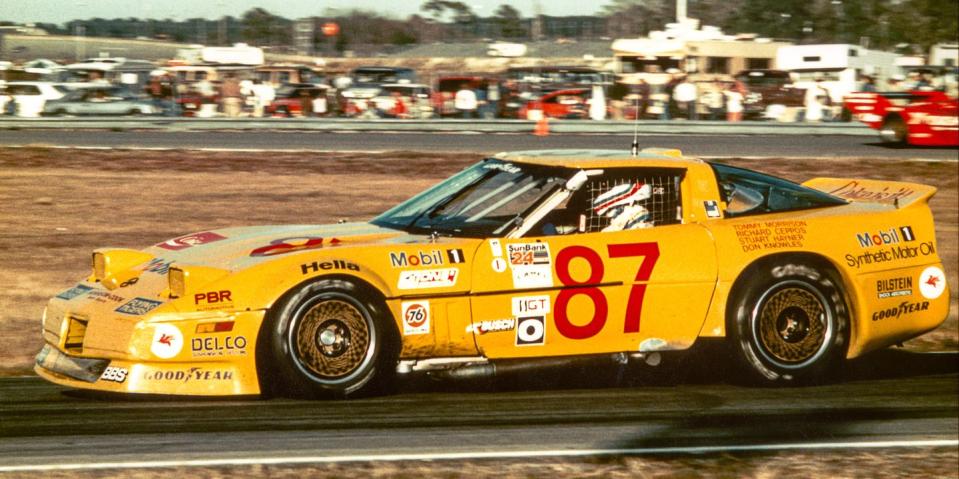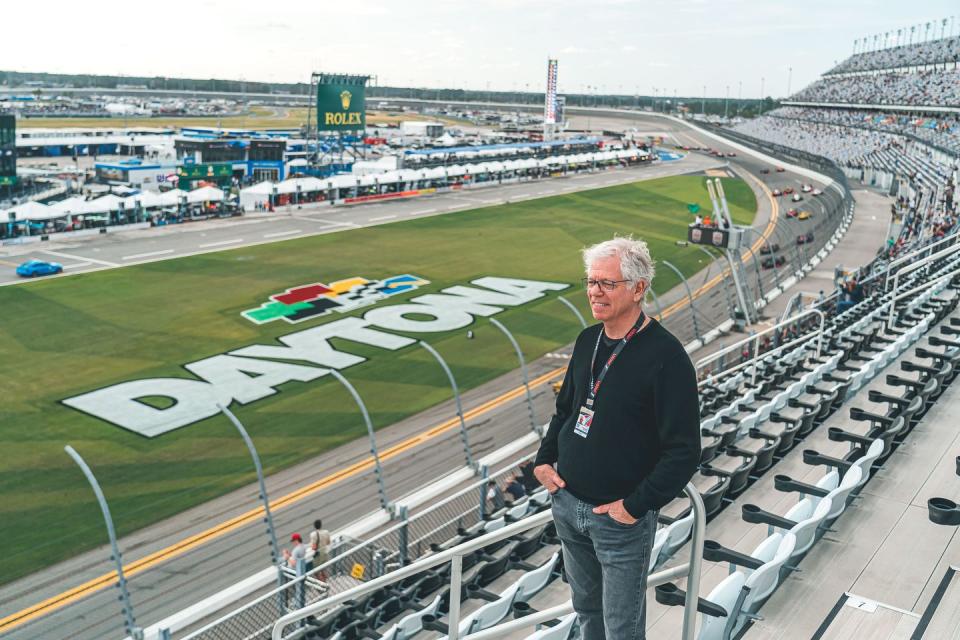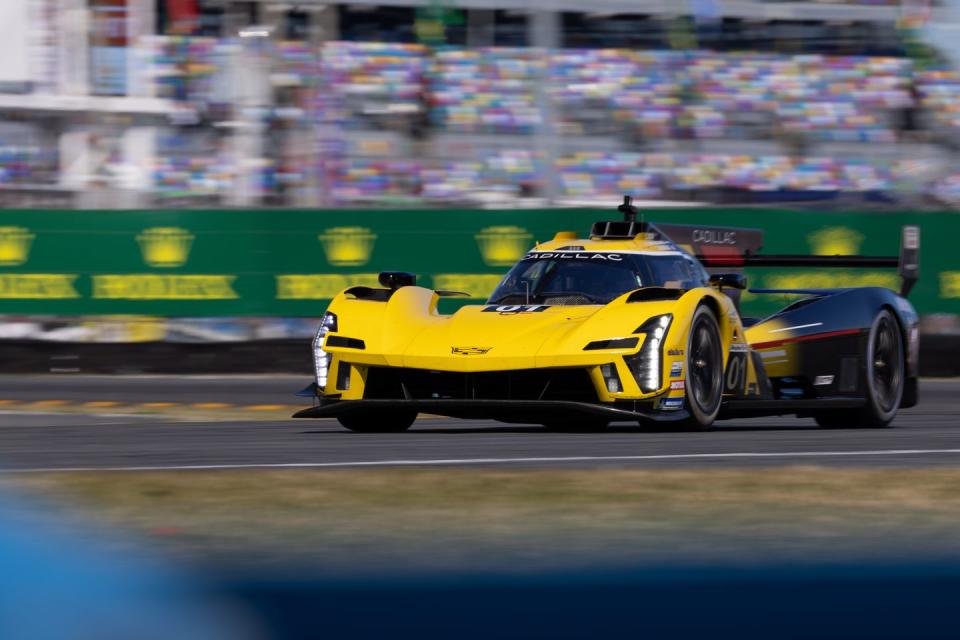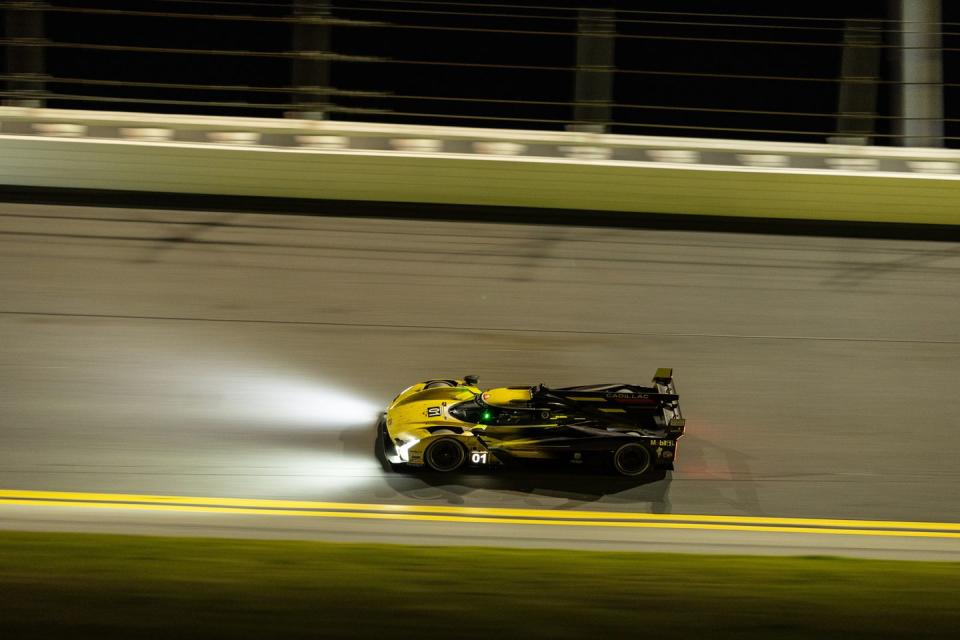Return to the 24 Hours of Daytona

One of my prized possessions is this photo of a school-bus-yellow C4 Corvette race car that I drove in the 24 Hours of Daytona in 1987. That's me behind the wheel, about to turn left and climb up onto Daytona International Speedway's high-banked Turn 1. In the background is a blurry red race car, most likely the famous Coca-Cola–sponsored Porsche 962 GTP prototype co-driven by sports car and Formula 1 superstar Hans-Joachim Stuck. Every time I look at that photo I feel a thrill from knowing that I had been on the inside of one of the great top-level professional sports car endurance races rather than at home watching it on TV. I came back to Daytona for this year's running—now sans race suit and helmet—to see what has changed and what hasn't. And also to remember what it was like to be there in the middle of it all, out on the track with my racing heroes.
The 24 Hours of Daytona, like those of us who have aged more than three decades, is both the same and different than it used to be. The 3.56-mile infield road course, which utilizes almost all of the 2.5-mile oval that surrounds it, hasn't changed except for revisions to the curbs. Some new buildings aside, Daytona still feels as imposing as it did when I first rolled into the infield garage area years ago. Standing there again today, the immense grandstands, which can seat more than 100,000 fans, tower over you; you're an ant at the bottom of an empty swimming pool. You can almost feel the racing history embedded in the tarmac and gouged into walls that line the oval. The facility opened in 1959, but it's been eating right and working out; it's in great shape. If only we all could age as gracefully.

The Daytona 24-hour endurance race, now called the Rolex 24 at Daytona, kicks off the pro-racing season as surely as Memorial Day marks the start of summer. And with similar anticipation of good times to come. Down in the garages the morning of the race, the 24-hour has a party feel. There's lots of hard work going on around the cars, but also a lot of smiles and laughter from the crews, drivers, and team owners. I remember that, plus being keyed up for the biggest race of my life.

Race-team owner Chip Ganassi, who had two Cadillac GTP cars entered in the top class at this year's event, confirmed that the lighthearted vibe is still alive. "The drivers love this race. It's fun for them. It's the beginning of the season. They get to see their friends from around the world. They're happy. No one's cranky and stressed out like they are at the end of the season when they're trying to win a championship." Ganassi would know; his IndyCar and endurance-racing teams have 19 series championships between them.
The 24 Hours remains an event that draws drivers from other racing disciplines beyond sports cars. When I raced, I was geeked to know that legends like A.J. Foyt, Al Unser, and Danny Sullivan were competing in the GTP class. NASCAR stars Darrell Waltrip, Bill Elliott, and Terry Labonte were in the field, as was Jim Downing, co-creator of the HANS device. A former Olympian turned race driver named Bruce Jenner was pedaling a Mustang in my class. I was on the prowl for them; I did see A.J. in pit lane before the race, climbing out of his Porsche 962.
It was the same in 2023. Among the big names this year were IndyCar champions Scott Dixon, Josef Newgarden, Sébastien Bourdais, and Simon Pageneaud along with four-time Indy 500 winner Helio Castroneves. NASCAR driver Austin Cindric and former Formula 1 driver (and current IndyCar shoe) Romain Grosjean were both in the show. Yes, I did get a glimpse of a couple of them.

As the race unfolded, I watched from a spot just behind the starter's stand at the start-finish line. The top-class GTP cars coming at me at 200 mph while weaving through clumps of competitors from the slower classes were breathtaking. Had I really been out there mixing it up in the middle of that? It was hard to believe. It didn't seem that hectic when I was driving, and probably wasn't. The cars run harder and closer today.
Sports-car racing is messy as well as exciting for fans because of the multiple classes, which circulate at different speeds. Simplified to its basic structure, there are two types of race cars in endurance races like the 24 Hours of Daytona: prototypes, which look like fighter jets on four wheels or grown-up Hot Wheels cars; and Grand Touring (GT) cars, which are based on easily identifiable production models like the Corvette Z06, Porsche 911, Ferrari 296, Lamborghini Huracán, and several others.
The prototypes are split into three classes in ascending order of horsepower and speed, with GTP at the top. Both of the GT classes, one for pros and one for a mix of pros and semi-pros, are now composed of cars that meet the FIA's global GT3 race-car specs. Like them, my C4 Vette racer started life as a production car—though it was the only car in what was then called the GTO class that wasn't a purpose-built, tube-frame racing machine hiding under fake production-car bodywork. The GT rules now prohibit those sorts of purebred racing machines.

 Yahoo Autos
Yahoo Autos 